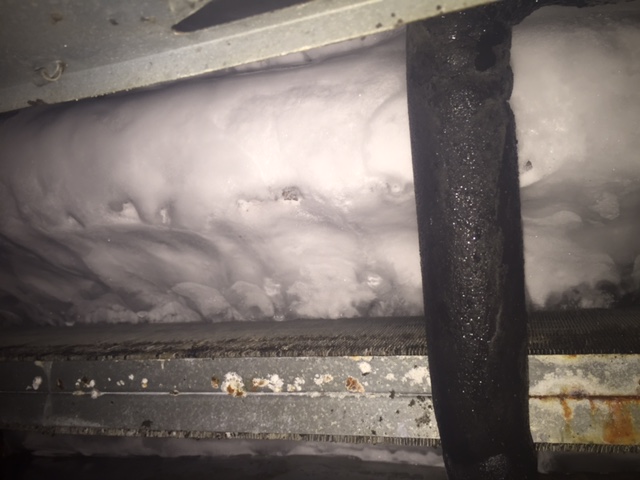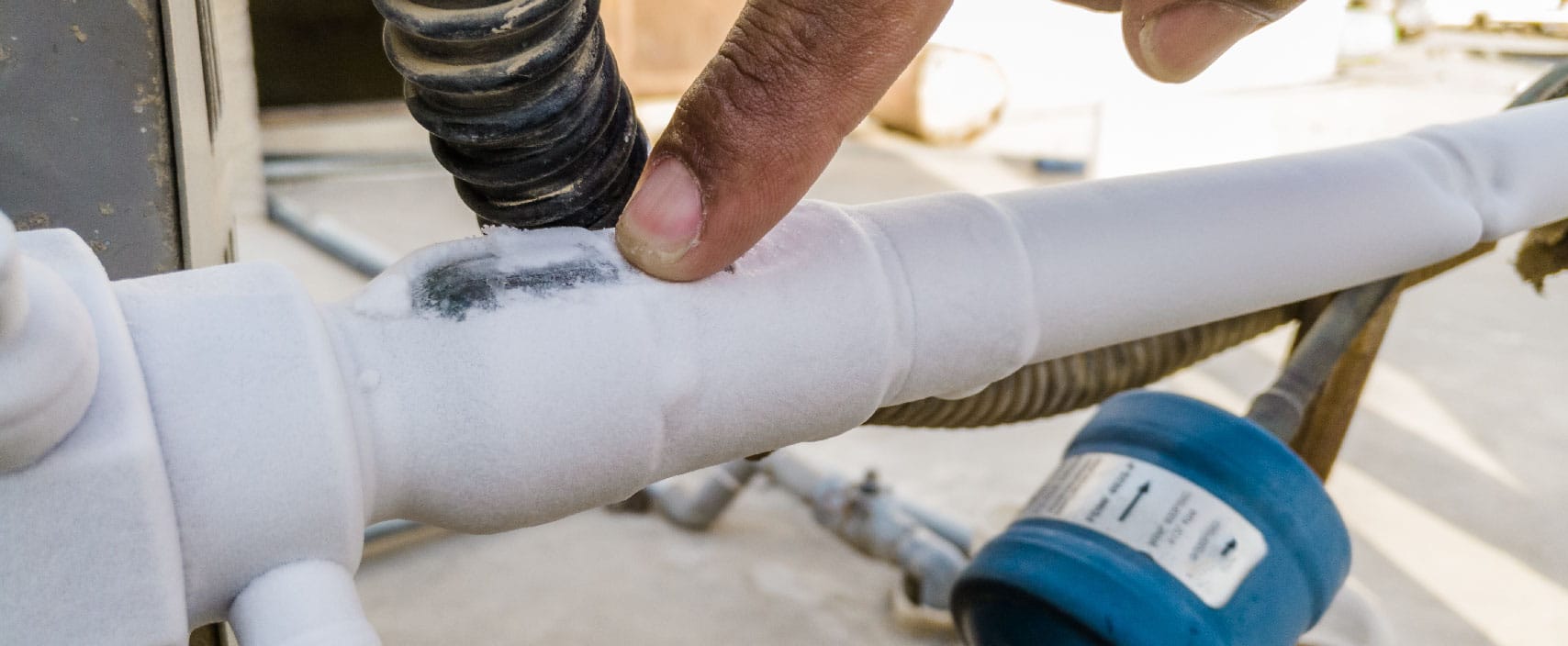Actions to Take If My AC Pipe Is Frozen - Immediate Solutions for Unfreezing
Actions to Take If My AC Pipe Is Frozen - Immediate Solutions for Unfreezing
Blog Article
What are your ideas with regards to What Do I Do If My AC Pipe Is Frozen?

Introduction
Uncovering that your a/c pipe is iced up can be worrying, specifically throughout warm summertime when you count on your a/c the most. Understanding what to do in such a situation is critical to avoid further damages to your cooling system and guarantee your comfort inside your home.
Recognizing the Causes
Numerous variables can add to the freezing of an a/c pipeline. Comprehending these causes can help you resolve the concern properly.
Lack of Airflow
One usual cause of a frozen a/c pipeline is inadequate air movement. When the airflow over the evaporator coil is restricted, it can cause the coil to drop below freezing temperature, causing ice formation on the pipeline.
Low Refrigerant Levels
Not enough refrigerant degrees in your a/c system can additionally lead to an icy pipe. Reduced cooling agent levels can trigger the pressure in the system to go down, leading to the freezing of wetness on the evaporator coil.
Cold Weather Conditions
In cooler climates, freezing temperature levels outside can contribute to the freezing of air conditioner pipes. If your air conditioner unit is not appropriately shielded or if there are leaks in the ductwork, chilly air can penetrate the system, causing the pipe to ice up.
Dirty Air Filters
Unclean or stopped up air filters can restrict air movement in your AC system, leading to different concerns, including a frozen pipeline. It's essential to replace or cleanse your air filterings system routinely to make sure proper airflow and avoid ice accumulation.
Indications of a Frozen Air Conditioner Pipe
Recognizing the indications of an icy air conditioner pipeline is essential for timely activity.
Lowered Airflow
If you see a significant decline in airflow from your vents, it could suggest an icy pipeline.
Ice Buildup on the Pipe
Noticeable ice build-up on the cooling agent line or the evaporator coil is a clear indication of a frozen air conditioning pipeline.
Weird Sounds from the Unit
Uncommon noises, such as hissing or gurgling, coming from your air conditioning system can indicate that there's ice present on the pipeline.
Immediate Actions to Take
When faced with a frozen AC pipe, it's essential to act rapidly to avoid further damages to your air conditioning system.
Switching off the a/c
The initial step is to shut off your air conditioning system to avoid the system from running and worsening the problem.
Checking for Blockages
Examine the area around the interior device for any kind of blockages that may be blocking air movement, such as furnishings or drapes.
Defrosting the Pipe
You can make use of mild techniques like placing towels taken in cozy water around the frozen pipeline to aid thaw it gradually.
Preventive Measures
Taking safety nets can assist avoid future occurrences of an icy AC pipe.
Regular Maintenance Checks
Schedule regular maintenance checks with an expert HVAC technician to make sure that your air conditioning system is running efficiently.
Altering Air Filters
Frequently change or cleanse your air filters to prevent air movement limitations and keep ideal performance.
Shielding Exposed Pipes
If your a/c pipelines are exposed to cool temperatures, consider protecting them to avoid cold during winter months.
Looking For Professional Help
If DIY techniques fail to deal with the concern or if you're unclear regarding how to continue, it's best to look for aid from a qualified HVAC professional.
When DIY Methods Fail
If your attempts to thaw the pipeline or address other problems are not successful, it's time to contact a professional.
Significance of Hiring a Professional HVAC Technician
A licensed HVAC technician has the competence and devices needed to detect and repair problems with your AC system safely and efficiently.
Conclusion
Taking care of an icy air conditioning pipeline can be a frustrating experience, however recognizing exactly how to react can help reduce damages and restore comfort to your home. By comprehending the causes, recognizing the indicators, and taking prompt action, you can properly address the concern and protect against future occurrences.
What to Do If Your AC Line Is Frozen
Make Sure All Supply and Return Air Vents Are Open
If you notice problems with airflow, the first thing you should do is check your supply and return vents. Supply vents distribute clean, conditioned air throughout your home. As this air becomes stale, it’s pulled into the return vent, where it’s reconditioned before being sent back out through the supply vent.
When these vents are closed, air won’t flow in the home. Before examining your AC, check the vents in every room and ensure they’re all open.
Check for a Dirty Air Filter
Another possible cause of limited airflow is a dirty air filter. Your air conditioner’s filters catch elements you don’t want to breathe in, such as dirt and dust. Over time, filters can become clogged, ultimately blocking air from flowing in and out. The lack of airflow can then cause the entire coil to freeze and will completely restrict any air from moving through it. The AC may need to be powered off for one to two days to allow the coil to thaw after replacing the filter to allow proper functioning of the unit. This debris can also accumulate on your AC’s evaporator coil, requiring a more serious repair. In general, air filters should be cleaned regularly (about every two weeks).
Assess Your Outdoor Unit
In addition to checking your AC, assessing the outdoor unit is a good idea. Also known as the condensing unit, it works with your interior unit to release heat outside. An issue with the outdoor unit can result in rising internal temperatures.
Overgrown Shrubs or Clogged Leaves
From leaves and twigs to shrubs and debris, there’s no shortage of outdoor elements that can accumulate around your condensing unit. When these elements get lodged inside the unit, they can block airflow. Fortunately, removing the blockage can solve the problem.
Sounds of a Broken Fan
Shrubs and leaves aren’t the only things that can impede your outdoor unit’s airflow. If the fan is broken, the unit won’t be able to properly get rid of heat — which means the internal temperature won’t go down. First, make sure the fan is spinning. If it is, check for the following sounds of a broken fan:
Buzzing Rattling Screeching Hissing Clicking Preventative Measures
Nobody wants to deal with a frozen AC line. In addition to causing problems with your air conditioner, they require professional repairs. On the bright side, there are preventative measures you can take to help ensure this issue doesn’t arise in the first place.
https://www.coopergreenteam.com/blog/what-to-do-if-ac-line-frozen

I discovered that blog post on What Causes AC Pipes To Freeze? while doing a lookup on the web. Liked our piece of writing? Please share it. Let others locate it. I appreciate reading our article about Have a Frozen AC Line? Here’s How to Fix It.
Request Appointment Report this page